
August 2022
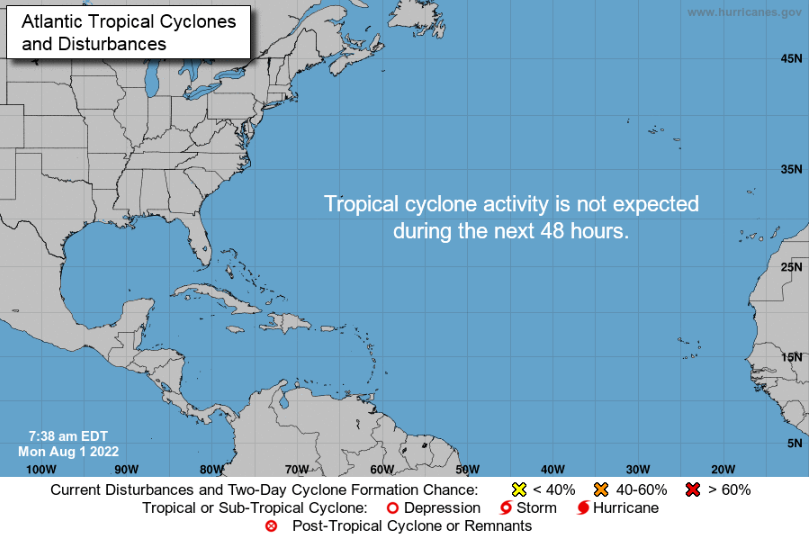 Bruce Sterling is VDEM's Hurricane Program Manager. Here's an update from him on how hurricane season is going so far:
We’re two months into the 2022 Hurricane Season and it’s been a little quieter than expected. With the forecast of a busier than average hurricane season, most people would probably expect that it would have been busier than it has been so far. To date, we have had three named storms, none which have been hurricanes, with a total of 3.25 named storm days. In an average year at this point, we would have seen three named storms, no hurricanes, with a total of eight named storm days. While we’re on track for an average season, we’re headed into the time of the year where tropical activity begins to increase. Whether we stay on track towards and average season or we experience the forecasted more active hurricane season, only time will tell. The important thing is, regardless of how many hurricanes this season eventually sees, the only one that matters is the one that comes here. We should be just as prepared during a slow season as we are for an average or busy season. Now is the time to ensure that your family and business is prepared.
As of this morning, Monday, August 1st, no tropical activity is expected to develop within the next 48 hours.
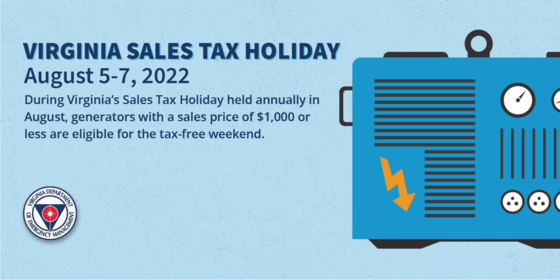 Remind your friends, neighbors, coworkers, patients, students, residents, and even strangers that Virginia's three-day Sales Tax Holiday starts THIS FRIDAY, August 5 at 12:01 a.m. and ends Sunday, August 7th at 11:59 p.m.
During the tax holiday, you can buy qualifying hurricane and emergency preparedness items, school supplies, clothing, footwear, and other products without paying sales tax.
Detailed lists of qualifying items and more information can be found in the Sales Tax Holiday Guidelines.
*If you have social media, this information will also be posted on VDEM's Facebook and twitter pages. Please share this information so it can reach a wider audience!
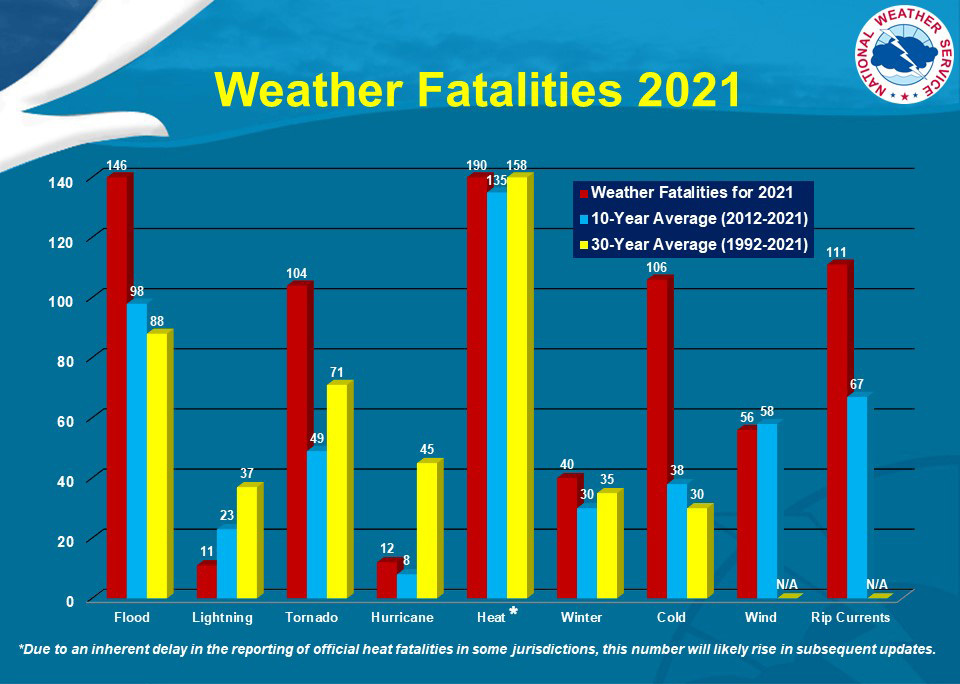 We’ve already dealt with a bout of extreme heat this summer–but with August here, there’s bound to be more right around the corner.
Did you know that extreme heat often results in the highest number of annual deaths among all weather-related hazards? In fact, the emphasis tends to be on other weather threats, but extreme heat, on average, kills more people each year than floods, hurricanes, and lightning COMBINED!
Those who are disproportionately affected by the heat, such as infants and children, older adults, outdoor workers, individuals with chronic medical conditions, low income households and athletes should take extra precautions. You can learn more about how each of these groups, and those caring for them, can be protected from the heat here. And while it is always a good practice to check on your neighbors, it’s particularly important during a heat wave to stop by to make sure your neighbors with mental and physical disabilities and older Americans are staying cool.
In most of the United States, extreme heat is defined as a long period (2 to 3 days) of high heat and humidity with temperatures above 90 degrees. In extreme heat, evaporation is slowed and the body must work extra hard to maintain a normal temperature. This can lead to death by overworking the human body.
We all know the dos and don’ts during the heat– find air conditioning, avoid strenuous activities, wear lightweight and light colored clothing, drink plenty of fluids, yadda yadda. But here are some others that sometimes don’t make that list:
- If you don’t have AC or your power is out, look for cooling centers in your community, or head to your local library or mall to cool off.
- Avoid cooking if you can (take advantage of those fresh summer vegetables!), but if you must cook, avoid appliances that put off a lot of heat, like the oven and stove. Slow cookers put off a lot less heat and use less energy. Grilling outdoors is also an option to keep the heat where it belongs–outside!
- Closing the curtains and blinds could mean the difference between a few degrees in your home. Every bit helps!
- Change your lightbulbs. Incandescent bulbs waste energy and emit excess heat. Cool your home by switching to fluorescent or LED.
- Get low! We all know that heat rises, so hang out on your lowest floor. If you have a basement, even better!
- Close interior doors to any rooms you’re not using during the warmest part of the day.
- Installing window awnings, making sure you have the proper insulation, and planting trees that provide shade are also things that will help you in the long-term!
If you have to be outside, recognize the signs of heat-related illnesses and how to respond.
HEAT CRAMPS
-
Signs: Muscle pains or spasms in the stomach, arms, or legs
-
Actions: Go to a cooler location. Remove excess clothing. Take sips of cool sports drinks with salt and sugar. Get medical help if cramps last more than an hour.
HEAT EXHAUSTION
-
Signs: Heavy sweating, paleness, muscle cramps, tiredness, weakness, dizziness, headache, nausea or vomiting, or fainting
-
Actions: Go to an air-conditioned place and lie down. Loosen or remove clothing. Take a cool bath. Take sips of cool sports drinks with salt and sugar. Get medical help if symptoms get worse or last more than an hour.
HEAT STROKE
-
Signs: Extremely high body temperature (above 103 degrees) taken orally; red, hot, and dry skin with no sweat; rapid, strong pulse; dizziness; confusion; or unconsciousness
-
Actions: Call 911 or get the person to a hospital immediately. Cool down with whatever methods are available until medical help arrives.
Read more about how to deal with extreme heat at Extreme Heat | VDEM (vaemergency.gov)
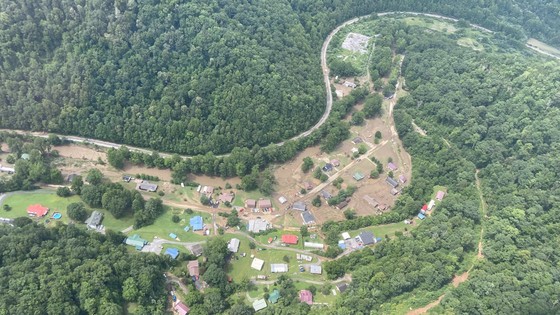 In the early morning hours of July 12th, the National Weather Services estimates that 6 inches of rain or more fell over the course of just a few short hours in a part of Buchanan county in SW Virginia. This caused catastrophic flooding to the Whitewood area of the county. Numerous roadways and homes along the river banks were impacted. Evacuations took place and at one point there were reports of over 40 people who were unaccounted for. Everyone was found safe, and most of the reports were due to family not being able to make contact due to lack of cell phone coverage, power outages, and land lines being down.
Initial damage assessments identified 33 destroyed properties, 32 listed as having major damage, 28 with minor damage, and 36 additional affected structures. This count does not include damages to public infrastructure, which has a separate federal declaration process. This process is the first step in helping the governor determine whether the scope of the damages could meet the criteria for requesting federal assistance through the Individual Assistance program.
To request federal assistance, a joint preliminary damage assessment is the next step, and is being done by the local government, VDEM, FEMA, and the Small Business Administration (SBA) to determine the uninsured personal property losses. Should the damage criteria be met, the governor can request a Major Disaster Declaration within 30 days of the incident. Should a request be made, the president can either approve or deny the request.
These Preliminary Damage Assessments are ongoing this morning, as more rain in the area delayed the process.
Preliminary Damage Assessments do not imply or guarantee federal assistance, but it is a required step in the request process. For more information on the damage assessment process, please visit How a Disaster Gets Declared | FEMA.gov.
Additional rainfall just last week caused other parts of SW Virginia to be impacted with flooding. Starting on July 27 and continuing through July 28, heavy rain fell in Wise and Dickenson counties, as well as the City of Norton, causing severe flash flooding and significant impacts to roadways and utilities. There were no deaths or injuries reported during this incident. The Virginia Department of Transportation (VDOT) is conducting damage assessments and roadway repairs.
Crisis Cleanup's Southwest Virginia Flooding Home Cleanup Hotline will remain open through August 19, 2022. Those needing assistance with fallen trees, drywall, flooring and appliance removal, tarping roofs, and mold mitigation, can call 276-258-0029.

Big kudos to VDEM Region 4 employees Justin Haga and Sara Harrington for successfully navigating and leading the VDEM teams on the ground through these local disasters. Let's hope severe weather stays away for a while, especially in Region 4.
|
 VOPEX-- Virginia Operations Exercise-- is a radiological exercise that is required by FEMA. Virginia has two Dominion-owned plants (North Anna and Surry) and therefore conducts an exercise on an annual basis, alternating facilities each year.
Emergency response personnel from several Virginia agencies, local governments, and Dominion Energy held a Biennial Radiological Emergency Preparedness Exercise on July 19th with the North Anna Power Station in Louisa County.
The Virginia Operations Plan Exercise (VOPEX) involved the following localities: Caroline County, Hanover County, Louisa County, Orange County, and Spotsylvania County. The Virginia Emergency Support Team (VEST) participated, which includes the state departments of Emergency Management, Health, State Police, Transportation, Social Services, Military Affairs, and Agriculture and Consumer Services.
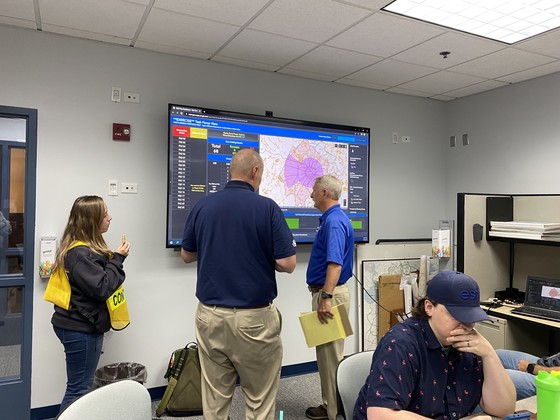 The full-scale exercise tested and assessed emergency operations functions, and emergency response capabilities, at the local and state level. The exercise was evaluated by the Federal Emergency Management Agency (FEMA). Within 90 days, FEMA will send its evaluation to the Nuclear Regulatory Commission for use in licensing decisions. The final report will be available to the public approximately 120 days after the exercise.
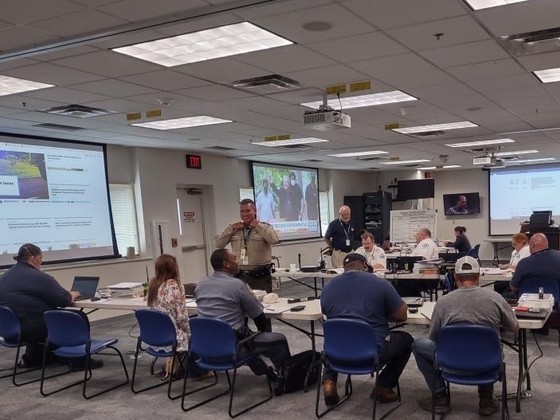 The picture above was taken at the Caroline County Emergency Operations Center, showing their involvement in the exercise.
You can read more about the North Anna plant and how it operates at North Anna Power Station | Dominion Energy
 We have a number of digital preparedness resources available for download and print here: Make a Plan | VDEM (vaemergency.gov). Start by encouraging people to print the Emergency Reference Card to fill out and display on their refrigerator. This has basic contact information that is useful and easy to reference in an emergency.
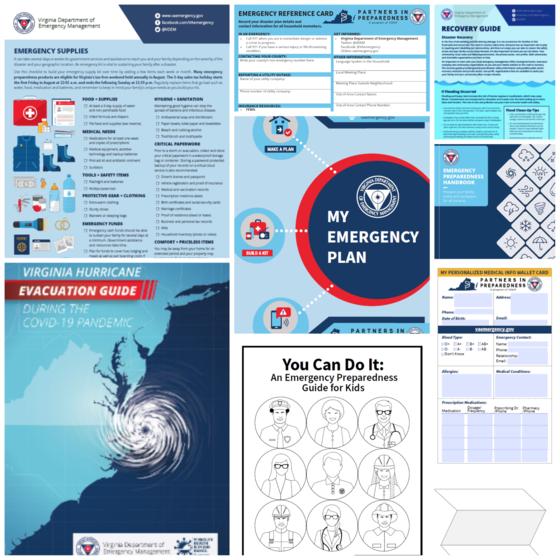 The next thing you'll want is "My Emergency Plan". It has everything you need before, during, and after a disaster from emergency information, an emergency kit checklist, how to find your hurricane evacuation zone, a place to list where you will go in the event of an evacuation, important contact information, and much more. There are also resources for recovery after a disaster.
 The August calendar has been updated with graphics on preparedness and general awareness topics, such as National Water Quality Day and Child & Youth Preparedness, which you can see examples of above. Take a look! You are welcome to send these out in a newsletter, and even add your own organization's logo to them to showcase our partnership.
Go to Preparedness Calendar | VDEM (vaemergency.gov) to see the new additions!

The Virginia Department of Emergency Management (VDEM) announced the award of $2,493,153 for shelter upgrades and backup generators to eleven local governments. The Virginia Emergency Shelter Upgrade Assistance Fund, authorized under the Code of Virginia §44.146.29:3. The fund is used for the purposes of providing matching funds to localities to install, maintain, or repair infrastructure related to backup energy generation for emergency shelters, including solar energy generators, and to improve the hazard-specific structural integrity (wind retrofit) of shelter facilities owned by the locality.
The maximum state match for a grant application is $450,000, with a local contribution based on the Commission on Local Government Federal Stress Index. Eligible sub-applicants include local governments, as defined as political subdivisions in the Emergency Services and Disaster Laws §44-146.16 “any city or county in the Commonwealth and, for the purposes of this chapter, the Town of Chincoteague, West Point, and any town of more than 5,000 population that chooses to have an emergency management program separate from that of the county in which such town is located.”
The following jurisdictions applied for and are receiving funding through this grant program include:
|
Locality
|
Project Name
|
State Match
|
Local Match
|
Total Grant Award
|
|
Brunswick County
|
Conference Center Upgrade Generator
|
$220,610
|
$99,115
|
$319,725
|
|
Caroline County
|
Caroline HS Installation of Generator
|
$289,000
|
$136,000
|
$425,000
|
|
Fairfax County
|
Lee District Rec Center Shelter Generator
|
$383,559
|
$235,084
|
$618,643
|
|
Hampton, City of
|
Multiple School Generator Installation
|
$416,771
|
$154,148
|
$570,920
|
|
Nottoway County
|
Nottoway County Upgrade Generators
|
$85,677
|
$36,719
|
$122,396
|
|
Prince William County
|
Prince William County Installation of Generators
|
$179,586
|
$92,514
|
$272,100
|
|
Salem, City of
|
Salem Civic Center Upgrade Generator
|
$154,800
|
$60,200
|
$215,000
|
|
York County
|
York HS Generator Installation
|
$449,920
|
$475,080
|
$925,000
|
| |
Total Funding
|
$2,179,923
|
$1,288,860
|
$3,468,784
|
The following localities will receive funding for FY 2021 when their current FY 2020 Shelter Upgrade Fund project they are implementing has been completed:
|
Locality
|
Project Name
|
State Match
|
Local Match
|
Total Grant Award
|
|
Botetourt County
|
Botetourt County Shelter Upgrade Generator Fire Department
|
$59,400
|
$30,600
|
$90,000
|
|
Goochland County
|
Goochland Sports Complex Shelter Upgrade Generator
|
$134,830
|
$86,203
|
$221,034
|
|
Wise County
|
St. Paul ES Shelter Upgrade and Installation Generator
|
$119,000
|
$51,000
|
$170,000
|
| |
Total Funding
|
$313,230
|
$167,803
|
$481,034
|
For additional information on mitigation grant funding opportunities, please contact:
Debbie Messmer – VDEM State Hazard Mitigation Officer at debbie.messmer@vdem.virginia.gov.
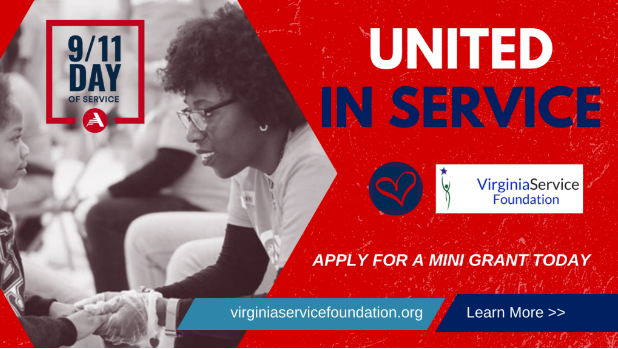 The Virginia Service Foundation is now accepting applications for 2022 Service Project Mini-Grants. Qualifying organizations may be eligible for an award of up to $250 to use towards hosting a service project connected to the 9/11 Day of Service. A limited number of grants are available and applications will be scored based on project scope and community benefits. Applications will be accepted until 5pm, July 29, 2022. The application process is easy and quick! Apply today!
LINK TO APPLY: https://forms.gle/izaKYtmQ3oKcqeda8
WHAT IS 9/11 DAY OF SERVICE?
The September 11 National Day of Service and Remembrance (9/11 Day), is a chance to help others in tribute to those killed and injured on September 11, 2001, first responders, and the countless others who serve to defend the nation’s freedom at home and around the globe.
Beginning in 2002, family members who lost loved ones lead the effort for an appropriate and fitting tribute to honor their loved ones and those who volunteered to serve our country in response to the tragedy. The leadership and efforts of these family members resulted in the legislative establishment of the September 11th National Day of Service and Remembrance in April of 2009. AmeriCorps was charged with supporting this effort across the county.
Each year, AmeriCorps works with 9/11Day.org, state service commissions, and faith-based, local, and national organizations to expand volunteering that honors the sacrifice of the families affected by September 11, 2001.
WHAT TYPE OF PROJECTS ARE ELIGIBLE FOR A MINI GRANT?
Volunteerism renews and strengthens communities, families, and ourselves. As more families are dealing with challenges from the COVID-19 pandemic, it is imperative that we don’t turn inward, but instead create common cause. Any project that supports the community in a tangible way and is submitted by an eligible organization will be considered.
Any public or private nonprofit organization, serving the Commonwealth of Virginia, includes faith-based and other community organizations, public or private schools, higher education institutions, and government entities. Projects must take place in the Commonwealth of Virginia. Projects must take place in September 2022, preferably the week of or after September 11th.
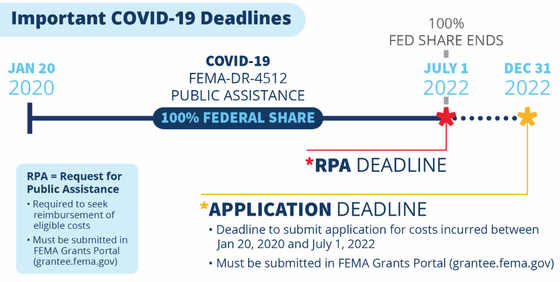 **FEMA has recently established key deadlines for applying for FEMA Public Assistance for eligible work that your organization may have performed that was required to prevent the spread of COVID-19.
December 31, 2022 marks the deadline to submit a streamline project application(s) in FEMA Grants Portal for eligible COVID-19 work and costs that occurred between January 20, 2020 and July 1, 2022. The streamlined project application must include information and documentation sufficient for FEMA to determine whether the work is eligible, and either the actual or estimated cost of the work.
How to Submit a Streamline Application - FEMA Grants Portal
Individuals looking for Individual Assistance, please visit disasterassistance.gov for assistance.
Businesses looking for assistance should visit the Small Business Administration’s disaster assistance website.

REGIONAL NEWS
Region 1: VDEM Region 1 employees will be supporting several National Night Out events being held in multiple localities on August 2nd. And as the Richmond Flying Squirrels season winds down, they will also be participating in a few more partner nights before the season is over. Join them to learn more about Emergency Management!
- Thurs, Aug 18 – CERT (Community Emergency Response Team) Night
- Thurs, Sept 1 – Preparedness Night
Region 2: Region 2 would like to introduce Jacob Hughes, who is the new All Hazards Planner for the region. Jacob started his career in public safety in 2010 as a volunteer EMT with the City of Virginia Beach EMS before becoming a police officer in the City of Suffolk in 2017. Jacob transitioned to VDEM in early 2022, where he started his Emergency Management journey in the Situational Awareness Unit as an Analyst, working primarily with alert and notification systems. Jacob enjoys spending time with his family in the mountains during his off time.
VDEM Region 2 has completed the FEMA-evaluated Bi-Annual North Anna Power Station Radiological Emergency Preparedness drill in July. This is a federally required and evaluated initiative, in collaboration with local Emergency Managers, state-agency partners, FEMA and Dominion Energy. We will continue to work with our localities and stakeholders to update plans, policies and procedures.
Region 3: The Region 3 team is busy with public assistance for several jurisdictions. They are working with these jurisdictions to mitigate funding from previous storms. There is an active shooter full-scale exercise being held at JMU, and region 3 is also participating in a hurricane exercise. The most exciting item for August will be the Region 3 team's annual fall luncheon. This provides a positive setting for the team to get together and discuss work related matters and continue bonding. "As the Chief Regional Coordinator, I can say we are truly a family and not just a team."- Gene Steward, Region 3 CRC
Region 4: Region 4 has been busy over the last few weeks handling the catastrophic flooding that happened in Buchanan County a few weeks back. Now they are actively working additional flooding that caused evacuations in Dickenson and Wise counties. This flooding prompted a second state of emergency by Governor Glenn Youngkin.
Region 5: This month Region 5 is attending the FEMA Region 3 Climate Adaptation Seminar in Newport News, VA. The seminar includes an overview of climate change and climate adaptation, information about hazards and vulnerabilities impacting states within FEMA Region 3, various emergency management and local government perspectives to prepare and respond to climate impacts, and available tools and resources to assist emergency managers with climate adaptation planning initiatives.
The Middle Peninsula/Northern Neck Emergency Managers quarterly meeting was held in Gloucester, VA. Highlight of the meeting was a talk from the Tappahannock Emergency Coordinator about the devastating fire last month in downtown Tappahannock
Region 6:
Region 7: The region 7 team has a busy August coming up!
There is a Northern Virginia Flood Resiliency meeting where they will be looking at some community events for September. Work is being done in the Virginia Immigrant Integration group for assimilation of immigrants into the Commonwealth.
Region 7 will also be holding Crisis Track training. Crisis Track is a system used to keep track of damage assessments. It is the tool that was used to track the recent damage from catastrophic flooding in Buchanan County.
The Northern Virginia Hazard Mitigation Plan update will be open for public comment and input soon.
 We are proud to announce our latest Partners!
We have had a lot of new registrations in the last few weeks! Look for those introductions next month after we touch base and learn more about how they're currently serving the community!
The Near Southwest Preparedness Alliance out of Roanoke is one of our newest Partners. Executive Director Robert Hawkins has one simple mission: to support the healthcare infrastructure of Southwestern Virginia with disaster preparedness, response, recovery and mitigation resources. In other words, they help keep the doors of healthcare open when disaster strikes. They do this by providing comprehensive disaster resource management, delivering world-class training, education and exercises, supporting response through incident coordination, improving healthcare intelligence with real-time situational awareness before, during and after disaster, and more. Learn more about Near Southwest Preparedness Alliance: NSPA - NSPA (nspa1.org).
|